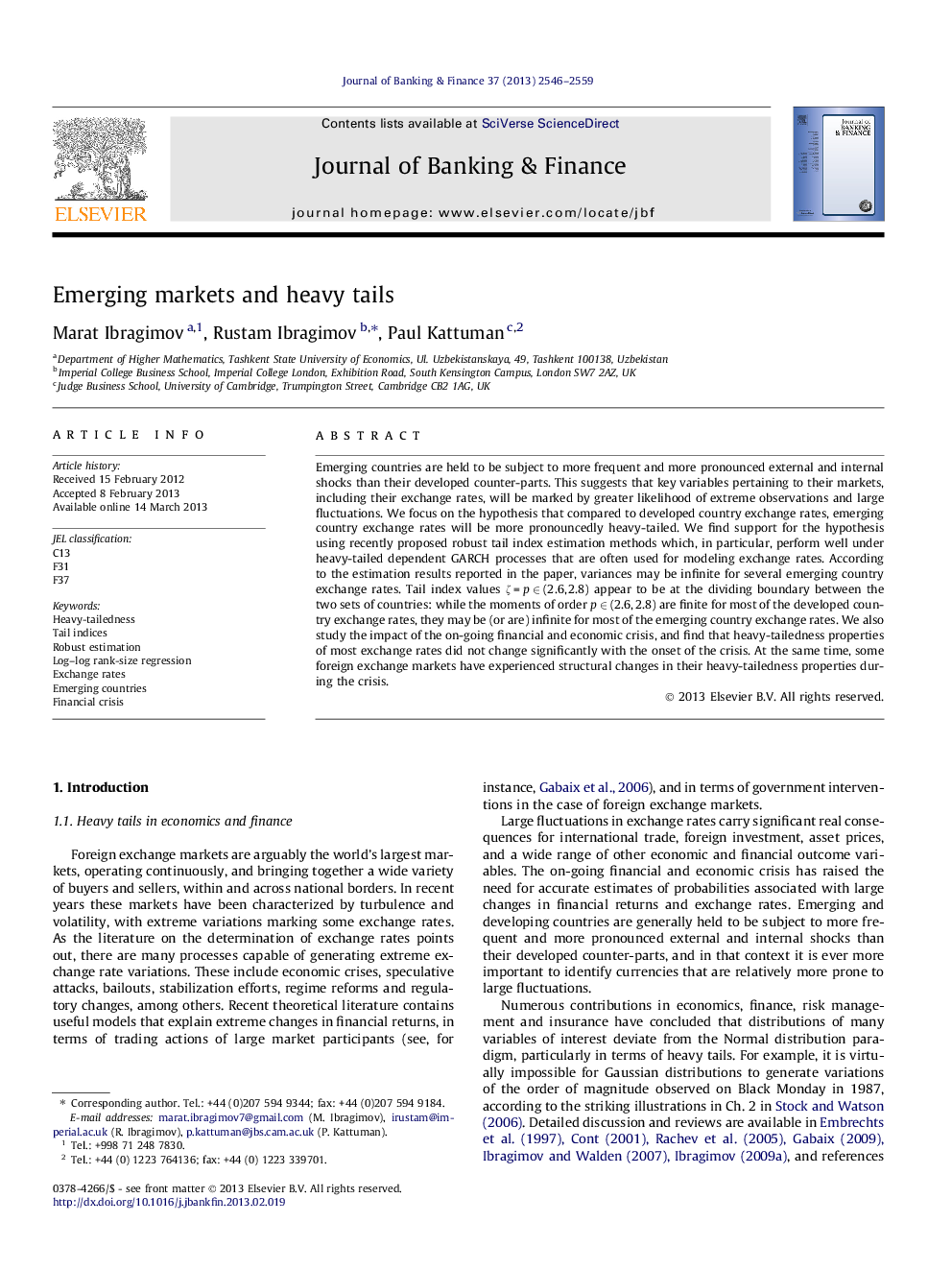| Article ID | Journal | Published Year | Pages | File Type |
|---|---|---|---|---|
| 5089257 | Journal of Banking & Finance | 2013 | 14 Pages |
Abstract
Emerging countries are held to be subject to more frequent and more pronounced external and internal shocks than their developed counter-parts. This suggests that key variables pertaining to their markets, including their exchange rates, will be marked by greater likelihood of extreme observations and large fluctuations. We focus on the hypothesis that compared to developed country exchange rates, emerging country exchange rates will be more pronouncedly heavy-tailed. We find support for the hypothesis using recently proposed robust tail index estimation methods which, in particular, perform well under heavy-tailed dependent GARCH processes that are often used for modeling exchange rates. According to the estimation results reported in the paper, variances may be infinite for several emerging country exchange rates. Tail index values ζ = p â (2.6, 2.8) appear to be at the dividing boundary between the two sets of countries: while the moments of order p â (2.6, 2.8) are finite for most of the developed country exchange rates, they may be (or are) infinite for most of the emerging country exchange rates. We also study the impact of the on-going financial and economic crisis, and find that heavy-tailedness properties of most exchange rates did not change significantly with the onset of the crisis. At the same time, some foreign exchange markets have experienced structural changes in their heavy-tailedness properties during the crisis.
Related Topics
Social Sciences and Humanities
Economics, Econometrics and Finance
Economics and Econometrics
Authors
Marat Ibragimov, Rustam Ibragimov, Paul Kattuman,
